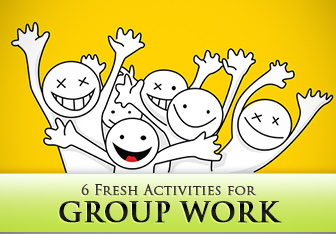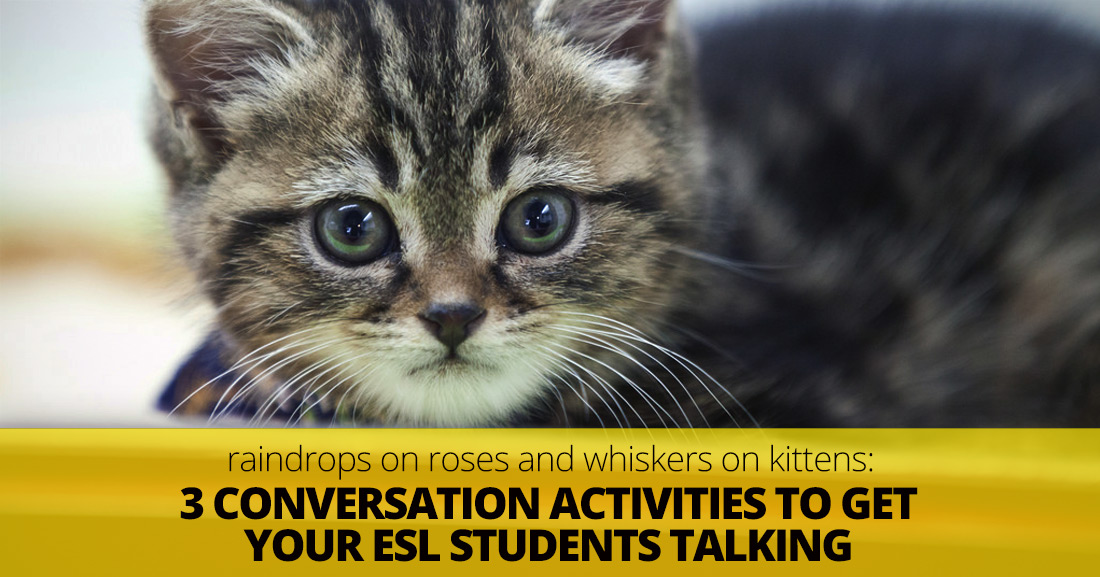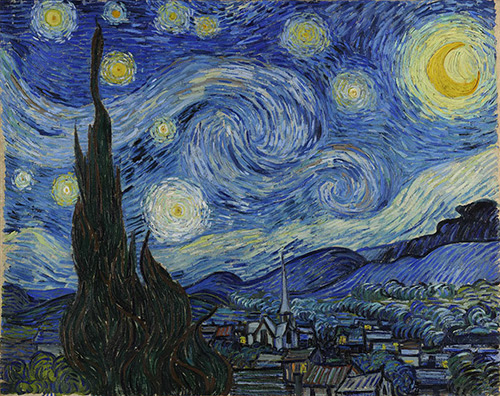6 Fresh Activities for Group Work


When we like something we are passionate about it, and we want others to share that passion. That’s why getting students to talk about their favorite things is a great way to promote discussion in the ESL classroom. More than that, everyone has different favorites, and your students are sure to disagree when it comes to what is best. That kind of disagreement also promotes discussion. So get ready to have your students talk up a storm with these simple activities that get them talking about a few of their favorite things.
Which carbonated beverage do your students like best? What is the top choice for the class? In this discussion activity groups of five to six students will have to agree on the best cola in your very own, in-class taste test. To set up the taste test, choose three or four brands of cola and bring enough of each one to class so every student can have a taste. You will need an area to set up where your students cannot see which brand you are serving. Set up one tray for each brand of cola you will be taste testing. (You will probably want a bottle of Coca-Cola and Pepsi as well as an inexpensive generic cola and one other.) Set up four trays and set enough small cups on each tray so you have three or four more than you have students in class. Label each tray Brand A, B, C, or D. Then bring your trays into the classroom and set them up front.

Each person will take a turn tasting each of the four colas you have poured into the cups. After tasting each one, students should make notes about how it tastes and how it compares to the others they tasted. (This is where a review of comparative and superlative adjectives will come in handy.) Once everyone has had a chance to taste test each of the colas, put your students into groups of five or six. Each group must decide unanimously which the best cola is. Give them time to discuss the different drinks allowing students to make arguments for or against different brands as they choose.
The goal is not so much to come to a unanimous decision as to have the conversation leading to it.
The goal is not so much to come to a unanimous decision as to have the conversation leading to it. If groups cannot come to an agreement by the end of your discussion time, that is okay. Once discussion time is over, have each group share their ideas with the rest of the class. End by sharing which cola was which.
Do your students have an appreciation for art? If nothing else they will at least have an opinion on it. Ask them to share what they think about some famous mater pieces with this activity. Start by printing off several pictures of classic art such as the ones linked in this article. You will want around ten to fifteen pictures that you can display around your room or on the front board.

'Starry Night' by the Dutch post-impressionist painter Vincent van Gogh.
At the start of your activity, review with your class the name of each piece as well as its artist. Then have students draw a three by three grid on a full sheet of paper and randomly put the name of one piece of art in each square. Have each student choose which painting is his favorite and write two sentences describing the picture on the bottom of his or her paper. Then let students mingle and talk.
When two students come together to talk, one student will ask the other which painting is her favorite. That student cannot give the name of the picture but must describe it by reading the sentences she wrote at the bottom of her page or by coming up with some others on the spot. Warn students not to look at their favorite painting when they describe it. The first student then guesses which painting his partner is describing. If he is right and that painting is in his grid, he can cross off that square and write his partner’s name in the square. If his guess is incorrect, he does not mark off anything. The other student then has a chance to ask him what his favorite painting is and mark it off her grid. Once a student has marked off three boxes in a row on his grid, he can sit down. Keep the discussion going until everyone has marked off three squares in a row.
This simple game gives students a chance to ask their classmates about their favorites. Have students stand in a circle in the middle of the room. Give one student a beach ball, a wadded piece of paper, or another ball that will not damage your room if accidentally thrown wild. That student starts by asking a question about a favorite. “What’s your favorite….?” Then he tosses the ball to another student in the circle. That person must then answer the question before asking a “What’s your favorite…” question and tossing the ball to someone else. She cannot however repeat any question that has already been asked. Play continues each person catching the ball, answering the question, and then asking an original question of his own. If a student is not able to come up with a question or an answer, he is eliminated from the game and sits down. Play until only one student remains standing. The teacher should act as judge if there is ever a question on whether a particular question has already been asked.
And while some may choose to sing about them, most everyone likes to talk about the things they like best. Your students will love the chance to talk about their favorites with these easy conversation activities.